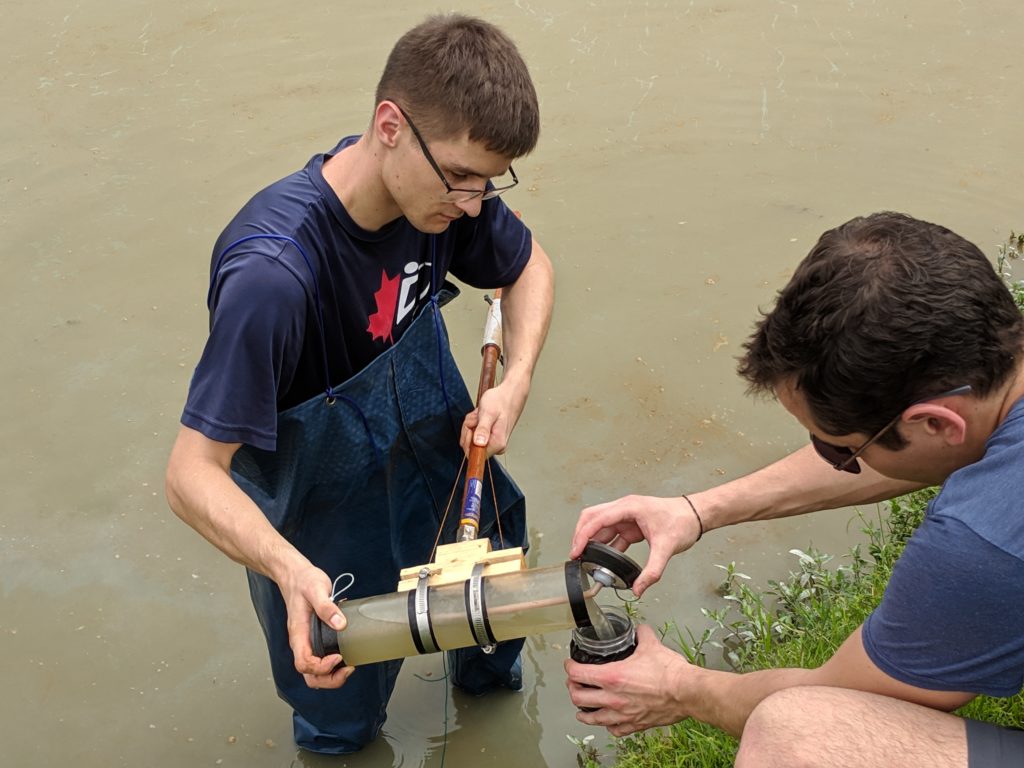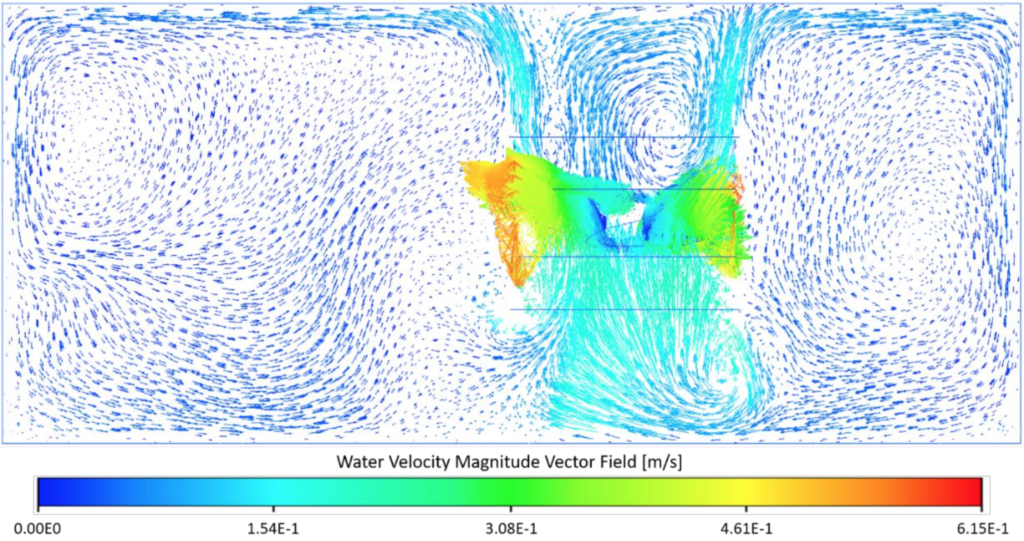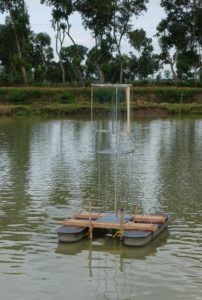 Collecting a water sample from an aquaculture pond
Collecting a water sample from an aquaculture pond
| Aquaculture is a major food source in many low and middle-income countries (LMICs). Improving water quality for aquaculture can increase yields, improve food security, and reduce antibiotic use. In the developed world, aeration is used to significantly improve water quality. However, aeration is the third largest cost in aquaculture, limiting its use in LMICs. In addition, current aeration methods require a secure electrical connection which is not always available.
Our device is a novel method of aeration which does not require electricity, has low maintenance requirements and can be cheaply deployed. The device utilizes the pond’s two-layer structure. The top layer is warm and oxygen rich as the plants in the water generate oxygen during the daytime (above saturation), while the bottom layer is cold and oxygen depleted. The current design is wind-powered and utilizes a vertical-axis wind turbine and impeller to circulate oxygen rich water from the upper layer of the pond to achieve a uniform concentration distribution. GoalIncrease aquaculture yields by 25% using a low-cost aeration system to circulate oxygen to the depths of the pond for enhanced fish production. ApproachThe current iteration of the system consists of a vertical-axis wind turbine coupled to an impeller. The turbine drives the impeller, positioned within a draft tube, inducing vertical circulation of oxygen-rich water throughout the pond. The aeration system is mounted on floats and can be implemented in a modular arrangement depending on reservoir size. The performance of the wind-powered aeration system is being validated through CFD and experimental testing. |
|


 Prototype wind-powered aeration system
Prototype wind-powered aeration system